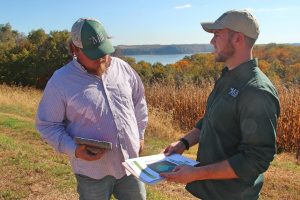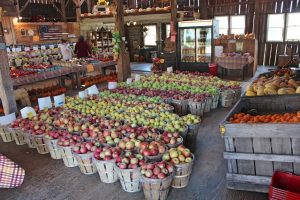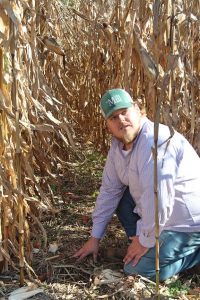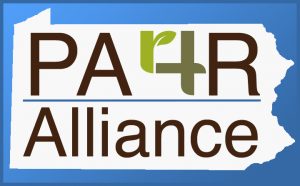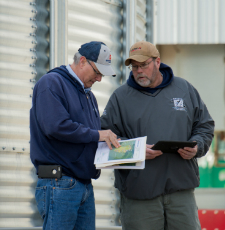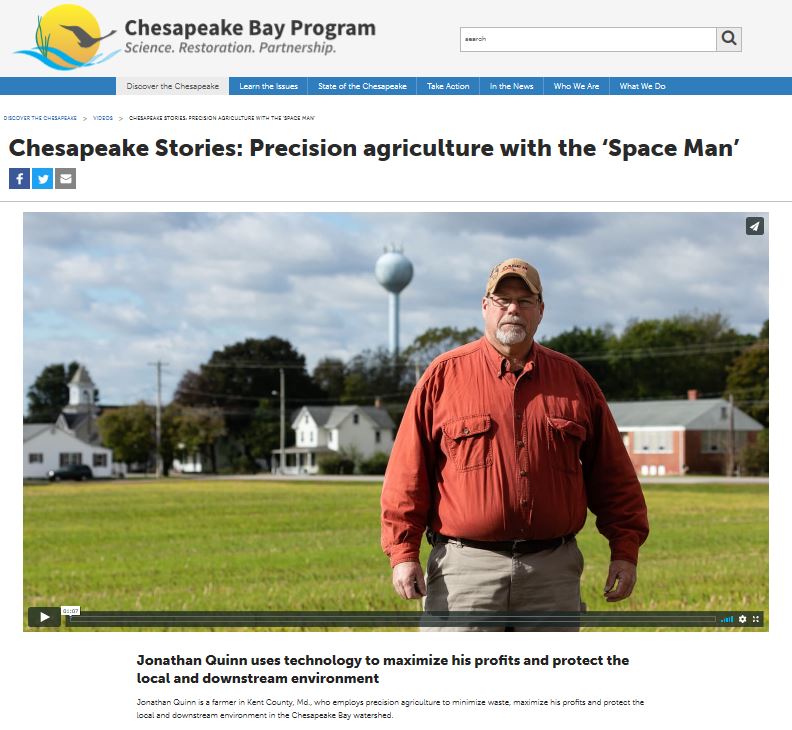New Funding Announced to Support Advanced Nutrient Management in Chesapeake Watershed
Queenstown, Maryland (September 21, 2020) – The Mid-Atlantic 4R Nutrient Stewardship Association was granted $990,000 over three years from the National Fish and Wildlife Foundation (NFWF) to provide education, training, and cost-share to increase the implementation of 4R Nutrient Stewardship practices across Delaware, Maryland, and Pennsylvania. The Mid-Atlantic 4R Nutrient Stewardship Association is a non-profit that supports local 4R Alliance, collaborations of agribusinesses, researchers, government agencies, and conservation groups working to advance nutrient stewardship within the Chesapeake Bay and Mid-Atlantic Region. With close partnership, the Delaware-Maryland 4R Alliance, the Pennsylvania 4R Alliance, The Nature Conservancy, Thompson Ag Consulting, Rosetree Consulting LLC, Penn Ag Industries Association, the Delaware-Maryland Agribusiness Association, and a number of other agribusiness partners will work with local farmers to advance the objectives of the project.
Partners will increase the implementation of 4R nutrient stewardship practices (applying the Right source of nutrients, at the Right rate, in the Right place, and at the Right time of year to maximize nutrient use efficiency) that will improve water quality and benefit the economic and social goals of local farmers. The project will be guided by first developing an understanding of the barriers to widespread 4R practice adoption and designing outreach and implementation strategies to offer solutions. We will engage 300 individual farms to identify additional nutrient conservation opportunities on 30,000 acres to increase implementation of 4R nutrient stewardship practices. Financial incentives will be utilized to increase implementation of split application of nitrogen on 25,000 acres. Additionally, we will develop a pilot process and business model for a Pennsylvania Manure Transport Exchange Bank.
The DE-MD 4R Alliance recently hosted a virtual field day attracting over 180 participants from across the Chesapeake Bay watershed illustrating the broad interest in advancing 4R practices. Agribusiness and research partners provided technical presentations on the latest technologies and agronomic, economic, and environmental benefits of 4R practices. This grant will continue to support these efforts at field days, farmer-focused “4R Real Talks” and technical service provider trainings. Agribusinesses and agency partners that work closely with farmers will continue to provide technical and financial assistance directly to producers to support the adoption of new practices. If you are interested in becoming a partner, please visit our website at www.4rmidatlantic.com.
The NFWF in partnership with the U.S. Environmental Protection Agency (EPA) and the federal-state Chesapeake Bay Program (CBP) partnership, is working to restore water quality and habitats of the Chesapeake Bay and its tributary rivers and streams. This year, EPA awarded $18 million in grants for 56 new projects across six states and Washington DC. Major funding is provided by EPA’s CBP. Overall, the grants will generate about $19 million in matching dollars, for a total of about $37 million, From 1999 to 2020, the Chesapeake Bay Stewardship Fund awarded more than 1,200 grants totaling early $176 million. Among other impacts, the grants are estimated to have reduced annual nitrogen pollution loading by 26 million pounds and annual phosphorus loading by 4.5 million pounds.
###
The Mid-Atlantic 4R Nutrient Stewardship Association is a non-profit entity working to provide education to farmers on the economic and environmental benefits of implementing 4R nutrient stewardship practices, which will accelerate progress toward clean water and habitat goals.
